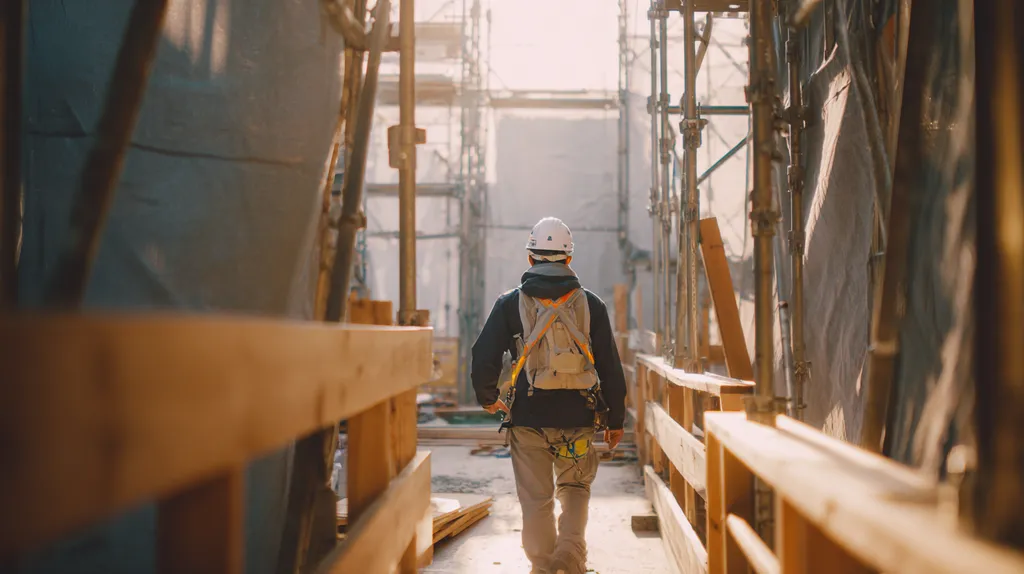Explore our project case studies.
Safety AI — Developing Predictive Models for Construction Site Hazards
By Mizuki Marumo, CEO, AIM Inc.
Introduction
AIM Inc. is conducting joint research and development with a major Japanese construction company to enhance safety management at construction sites through AI technologies.
This project aims to assist traditional manual safety patrols by using a Small Language Model (SLM) to automatically detect potential hazards such as open edges, handrails, and protective equipment.
By enabling AI to support the safety of every individual on site, this initiative marks a vital first step toward a future where the construction industry achieves both safety and operational efficiency.
Background — The Necessity of “Safety × AI”
With the rapid evolution of AI technology—particularly the emergence of Large Language Models (LLMs) such as ChatGPT—we have entered an era where AI can comprehend and reason in ways similar to humans. However, AIM’s focus extends beyond accuracy alone. We are pursuing the next frontier: stability and cost optimization.
Our mission is to minimize the computational cost per inference and make AI operate continuously, instantly, and affordably on site. This philosophy embodies the essence of AIOps (AI Operations), and AIM sees hazard prediction as one of its most meaningful applications.
While high-cost, high-performance LLMs can certainly perform these tasks, we believe that achieving similar functions through efficient edge-deployed SLMs will bring us closer to a truly streamlined construction process.
Technical Approach — Safety Language Model (SLM)
In this study, we train AI models on actual on-site safety inspection checklists so that the system can automatically identify the presence or absence of potential hazards by analyzing images, text, and contextual information.
Fine-tuning targets include:
- Open edges (fall risk)
- Presence or absence of handrails and guardrails
- Proper use of protective gear (helmets, safety harnesses)
- Placement of materials and walkway obstructions
- Scaffold and workspace deficiencies
Technical highlights:
- Operates with approximately one-tenth the inference cost of an LLM.
- Combines synthetic and counterfactual data (scenarios with and without hazards) to improve robustness and diversity.
- Trained models can be deployed on both cloud and on-premises environments.
Future Vision — Collaboration Between Humans and AI on Site
In the near future, we envision a system where chest-mounted cameras, helmet cameras, and drones capture real-time video, enabling AI to instantly detect and alert potential hazards without human intervention.
AIM envisions a jobsite where humans and AI work seamlessly together. AI functions as the “sixth sense” of on-site engineers—alerting them at the very moment a risk is detected. To realize this vision, AIM is committed to pursuing both technological implementation and ethical safety in AI development.
Future Outlook
- Real-time safety monitoring trials in operational environments
- Automated risk scoring through comparison with work records
- Cross-industry expansion into manufacturing, logistics, and infrastructure inspection
AIM aims to be more than an AI development company— we strive to become a partner that helps construction sites create safety autonomously.
AIM’s Vision
AIM believes in a future where AI becomes a companion to every worker on site. We develop technologies that strengthen the foundation of industries such as construction, manufacturing, and real estate.
AI that not only detects danger—but also creates peace of mind for those working in the field. That is the future of “Safety AI” that we aspire to build.
The Current Situation in Japan and Our Challenge
At present, most AI models used in Japan for safety management focus only on individual hazard detection, such as facial recognition or simple sensor alerts when someone enters restricted areas. These are valuable but remain limited, one-dimensional forms of automation.
If successful, this initiative will demonstrate that an SLM can make autonomous safety judgments on site without cloud connectivity. In the future, we believe AI models embedded in surveillance cameras and monitoring systems will be able to manage diverse on-site risks in real time, approaching human-level judgment.
AIM will continue to pursue new forms of safety co-created by humans and AI— with the hope of contributing to a world where construction site accidents become a thing of the past.

A futuristic Japanese construction site where drones and wearable cameras collaborate with AI for safety monitoring.

A Japanese construction site during morning patrol—safety supervisor inspecting scaffolding and structure gaps.

Mizuki Marumo
CEO
Multiple internships, <br> COO of a construction-focused AI startup.